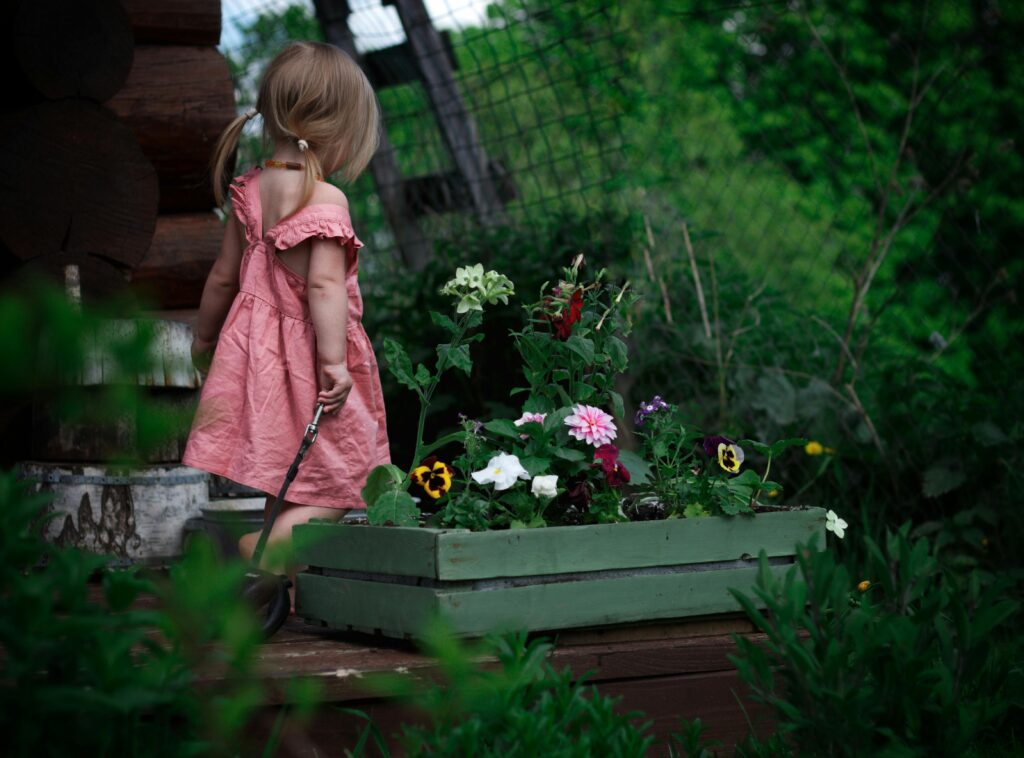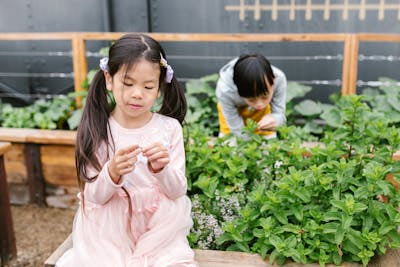 For children with Autism Spectrum Disorder (ASD) and related sensory processing challenges, the world can often feel overwhelming. Loud noises, unpredictable environments, and overstimulation can trigger distress and lead to behavioral meltdowns. However, research and firsthand experience have shown that sensory gardens—carefully designed spaces that engage all five senses in a structured, soothing way—can provide immense therapeutic benefits. As a former special education teacher with years of experience working with ASD students, I have witnessed firsthand how a well-designed sensory garden can become a safe haven—a place of calm, engagement, and discovery.
For children with Autism Spectrum Disorder (ASD) and related sensory processing challenges, the world can often feel overwhelming. Loud noises, unpredictable environments, and overstimulation can trigger distress and lead to behavioral meltdowns. However, research and firsthand experience have shown that sensory gardens—carefully designed spaces that engage all five senses in a structured, soothing way—can provide immense therapeutic benefits. As a former special education teacher with years of experience working with ASD students, I have witnessed firsthand how a well-designed sensory garden can become a safe haven—a place of calm, engagement, and discovery.
What Is a Sensory Garden?
A sensory garden is an intentional outdoor space designed to stimulate the senses in a gentle, non-overwhelming way. It includes elements that engage sight, touch, smell, sound, and taste through plants, textures, colors, water features, pathways, and interactive elements.
Unlike traditional gardens, sensory gardens are designed with structure, rhythm, and predictability—elements that are incredibly soothing for children with ASD, who often find comfort in symmetry, repetition, and routine.
The Science Behind Sensory Gardens and ASD
Studies on sensory integration therapy and environmental psychology indicate that structured, nature-based settings can help reduce anxiety, promote self-regulation, and encourage sensory exploration in a safe, controlled way. Research published in the Journal of Autism and Developmental Disorders shows that exposure to nature lowers cortisol levels (the stress hormone) and enhances focus, mood, and social interaction in children with ASD.
Gardening itself has also been linked to improved motor skills, increased serotonin production (a natural mood booster), and the development of executive function skills—such as planning, sequencing, and attention span.
Why Sensory Gardens Work for ASD Children

They Reduce Anxiety and Lower the Likelihood of Meltdowns
Children with ASD are often hypersensitive to sensory input. The wrong environment—bright fluorescent lights, echoing hallways, crowded spaces—can trigger an overload. A sensory garden provides a gentle, controlled sensory experience that helps children decompress and self-regulate.
- The repetitive motion of running fingers through soft grass or sand can be self-soothing.
- The gentle sound of a water feature or rustling leaves provides a natural white noise that drowns out overwhelming auditory input.
- Symmetrical layouts and predictable pathways provide a sense of order and control, reducing stress.
They Encourage Routine, Which Lowers Behavioral Challenges
For children with ASD, routines create predictability, and predictability lowers stress. Having a daily or weekly gardening routine helps children feel in control of their environment.
- They learn cause and effect—watering a plant leads to growth.
- They develop responsibility—tending to plants daily reinforces a routine.
- The structured, repetitive nature of gardening is both therapeutic and rewarding.
They Stimulate All Five Senses in a Controlled Way
A well-planned sensory garden incorporates:
- Sight: Bright flowers, calming blues and greens, symmetrical pathways.
- Touch: Velvety lamb’s ear, rough tree bark, cool stones, warm sunlit leaves.
- Smell: Lavender, rosemary, mint—plants known for their calming effects.
- Sound: The rustle of bamboo, the trickling of water, wind chimes with soft tones.
- Taste: Edible plants like cherry tomatoes, strawberries, and basil provide safe sensory exploration.
They Improve Social Interaction and Communication
Sensory gardens encourage social skills in a non-verbal, pressure-free way. Many ASD children struggle with traditional social settings, but gardening can be a shared experience:
- Collaborative planting projects encourage turn-taking and teamwork.
- Non-verbal children can express themselves through plant selection and arrangement.
- Working in a calming, natural environment fosters relaxed social engagement.
They Support Gross and Fine Motor Skill Development
Gardening engages both large and small muscles, improving hand-eye coordination, balance, and strength.
- Digging, raking, and carrying watering cans build gross motor skills.
- Pinching seeds, pulling weeds, and planting tiny sprouts refine fine motor skills.
How to Design a Sensory Garden for an ASD Child
A well-designed sensory garden is structured, predictable, and engaging without overwhelming. Here are essential design elements:
Create a Clear Layout with Predictable Pathways
- Use symmetrical garden beds to provide a sense of balance and order.
- Curved paths should be gentle and flowing, avoiding sharp, unexpected turns.
- Clearly defined spaces for different activities (a sitting area, a digging station, a water feature) prevent sensory overload.
Choose Plants That Engage But Don’t Overwhelm
- Calming plants: Lavender, chamomile, and jasmine reduce anxiety.
- Textural plants: Lamb’s ear (soft), succulents (smooth), and pinecones (rough) provide tactile exploration.
- Safe-to-taste plants: Strawberries, mint, and sugar snap peas encourage sensory engagement.
Include Movement-Friendly Features
- Swing benches or hammocks provide calming vestibular input.
- Stepping stones, logs, and balance beams encourage safe, structured movement.
Provide Quiet Retreat Spaces
- A small shaded alcove or covered area gives children a place to retreat when they feel overwhelmed.
- Raised garden beds or seating areas with high-backed plants create an enclosed, secure feeling.
Final Thoughts: A Space of Peace and Possibility
As a former ASD special education teacher, I have seen firsthand how structured sensory input lowers stress, decreases behavioral challenges, and creates an outlet for self-regulation. A sensory garden is more than just an outdoor space—it’s a therapeutic tool that gives children with ASD the chance to explore, calm their minds, and engage with the world on their terms.
In a world that can feel overwhelming, a sensory garden offers something invaluable: a place to just be.
If you are considering installing a sensory garden for your child, I encourage you to start small. Even a few well-placed plants, a designated quiet space, or a simple water feature can make a profound difference.
